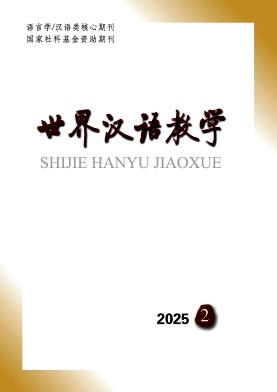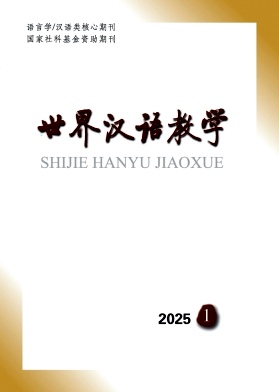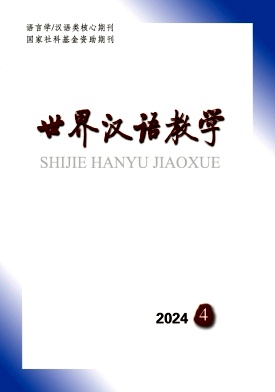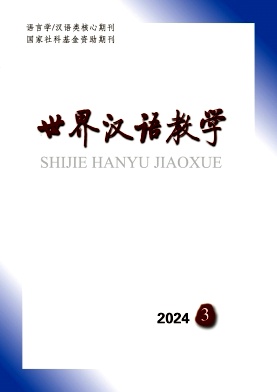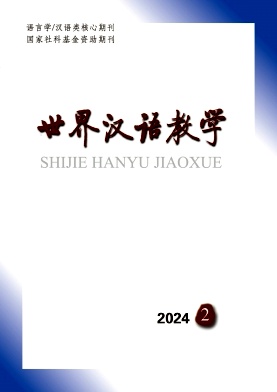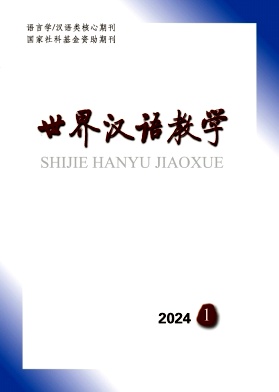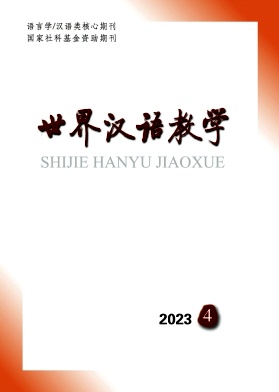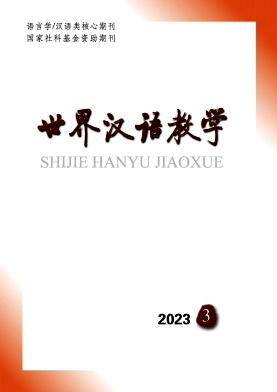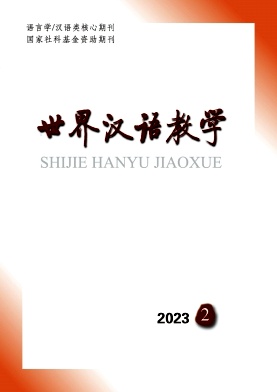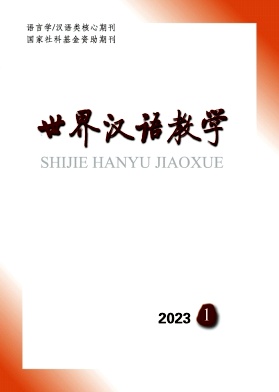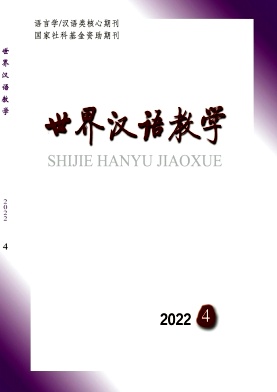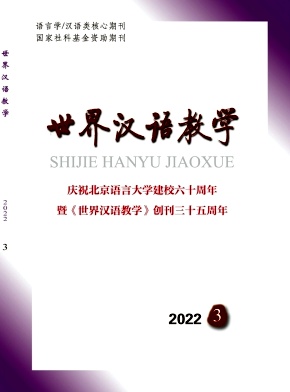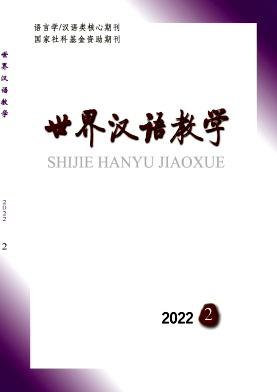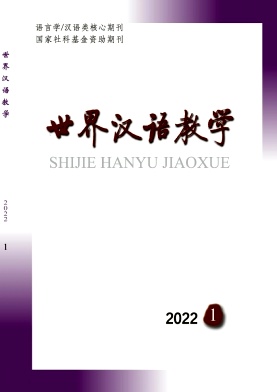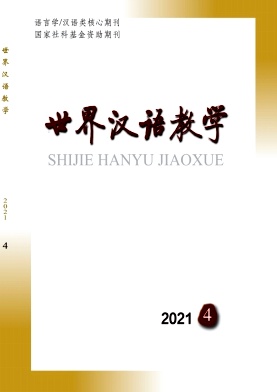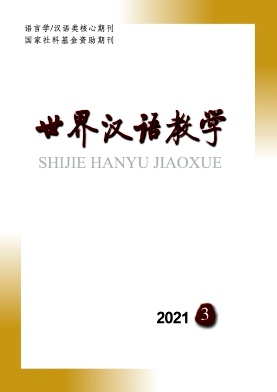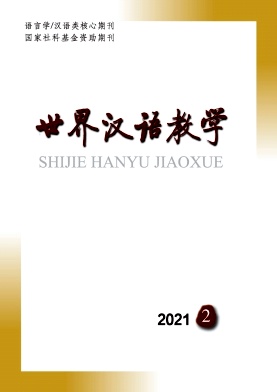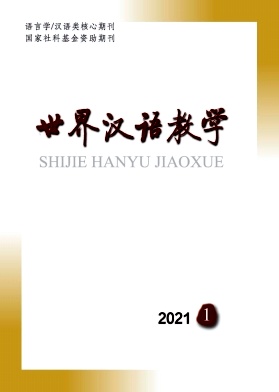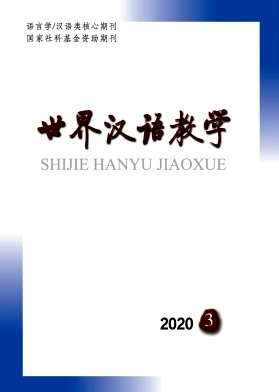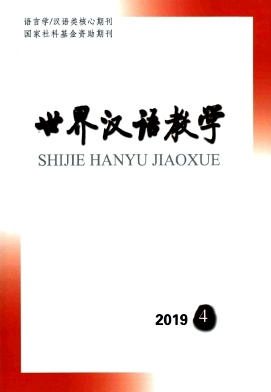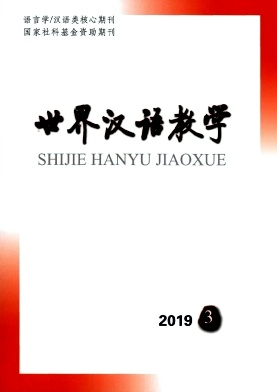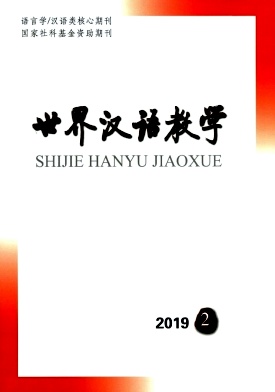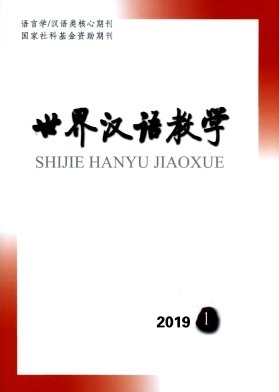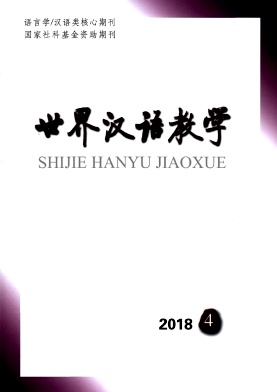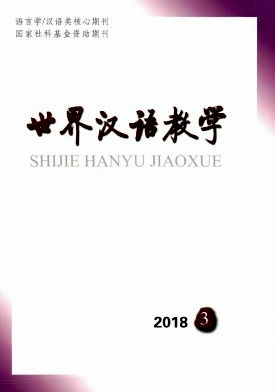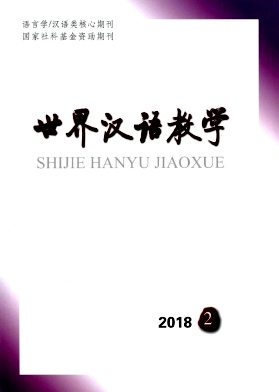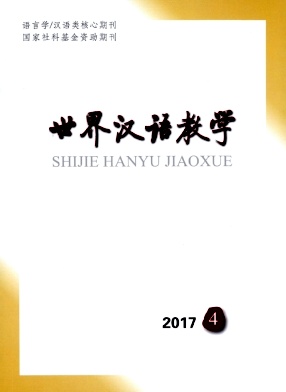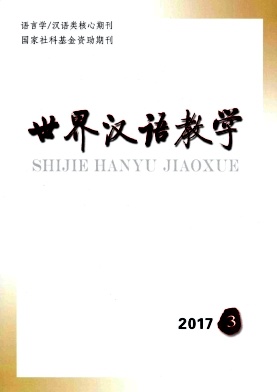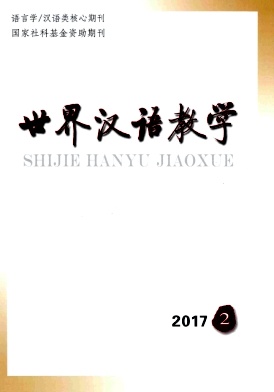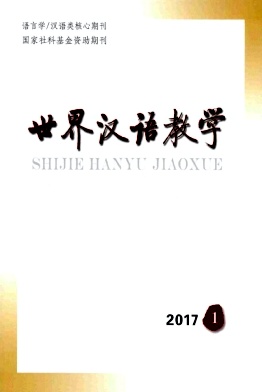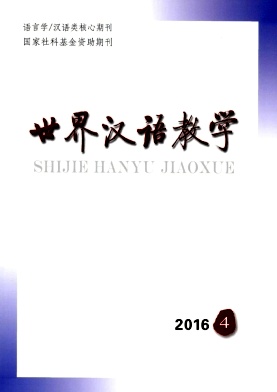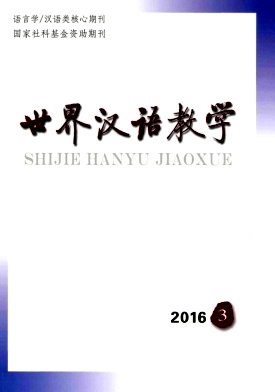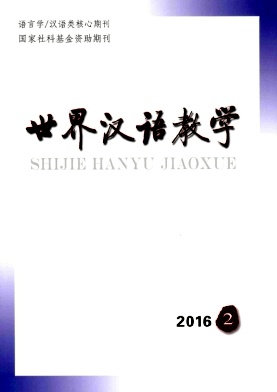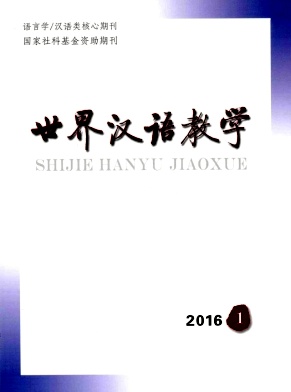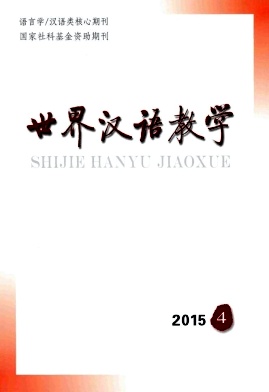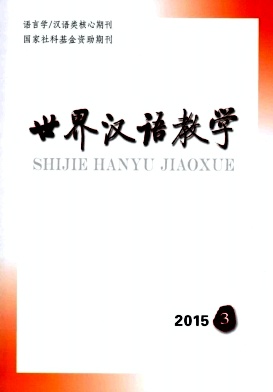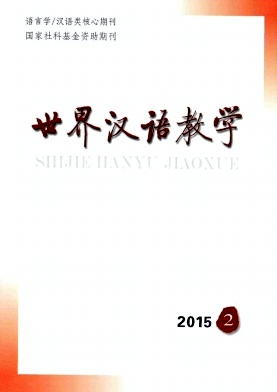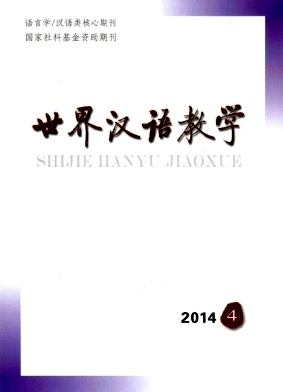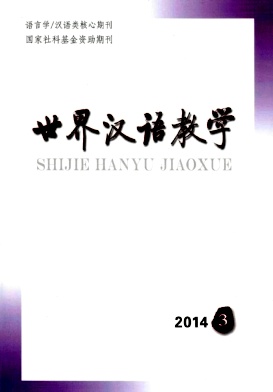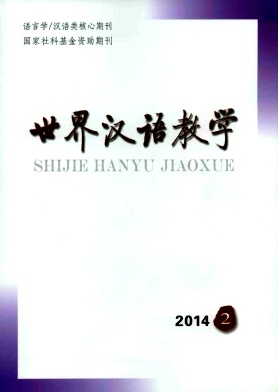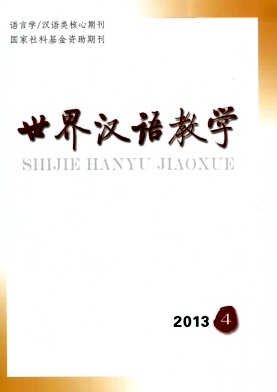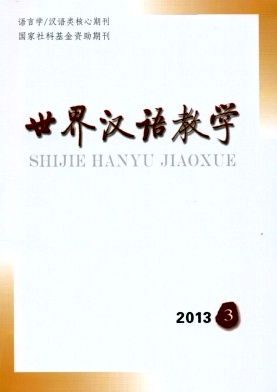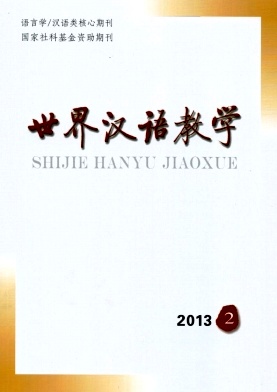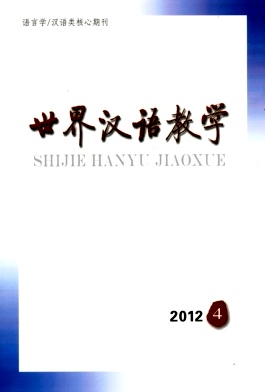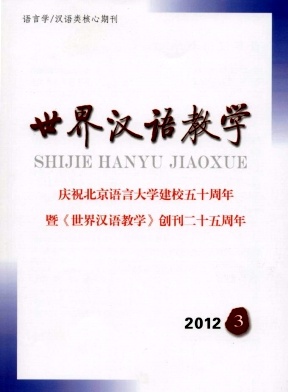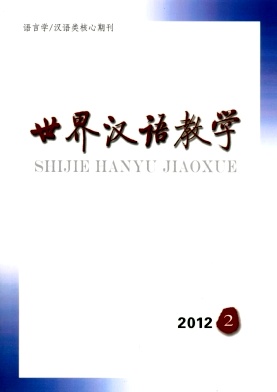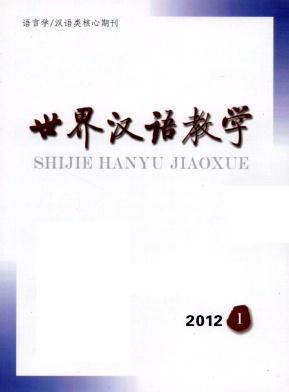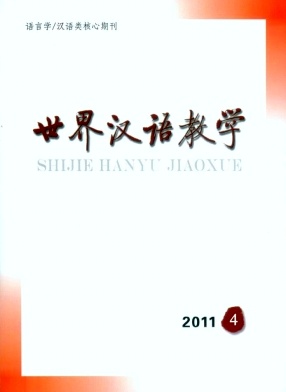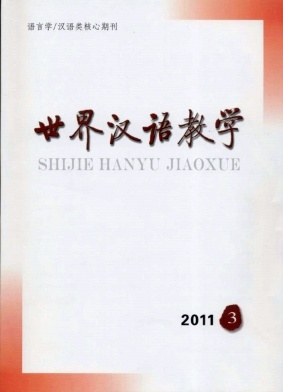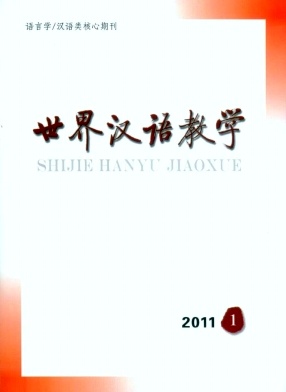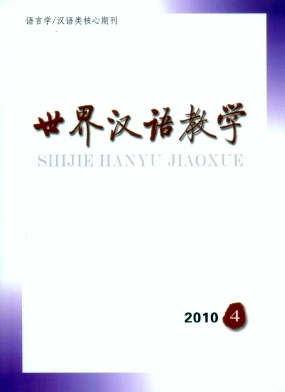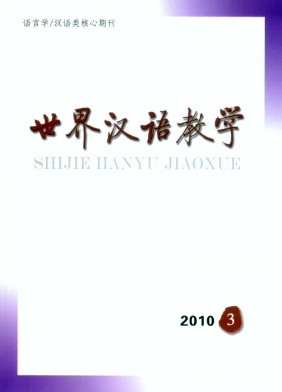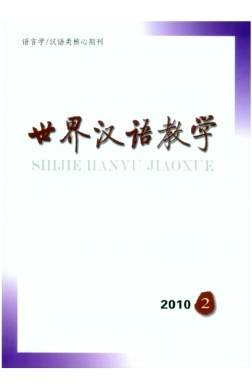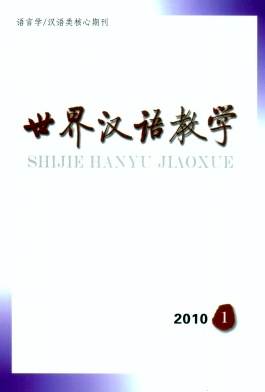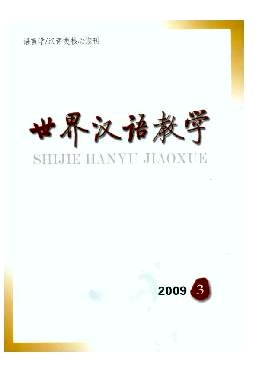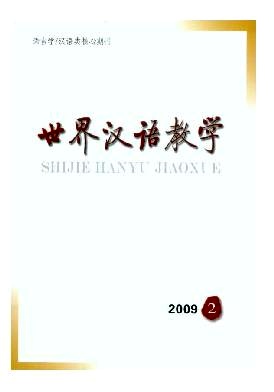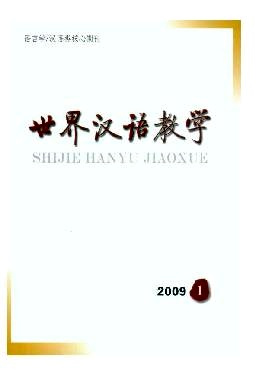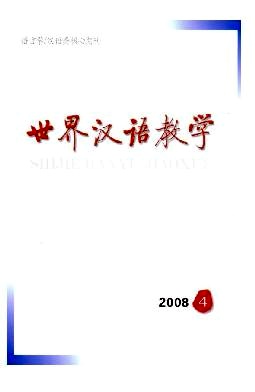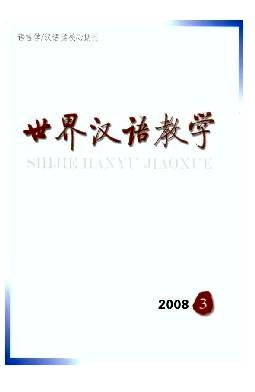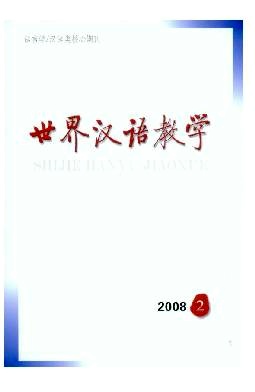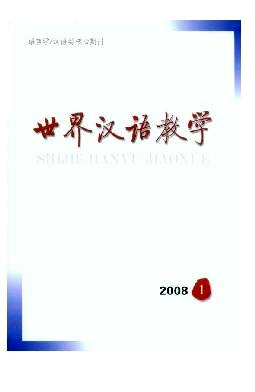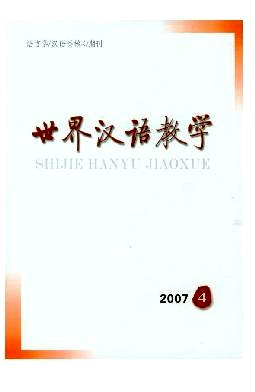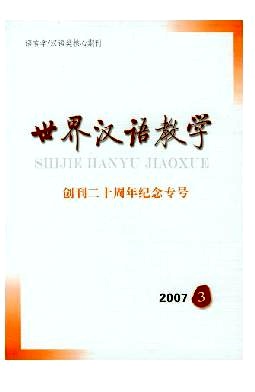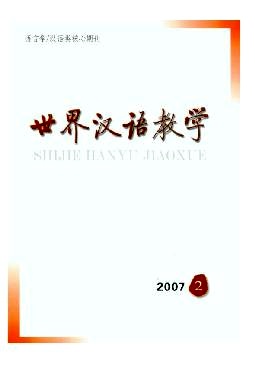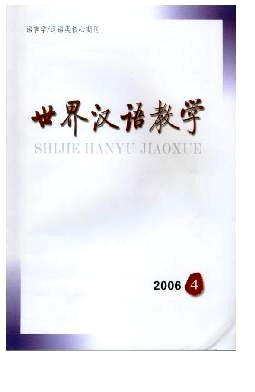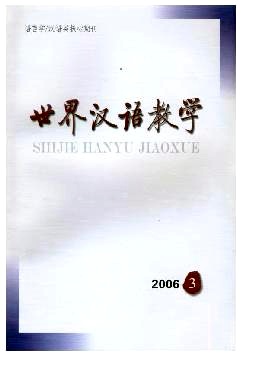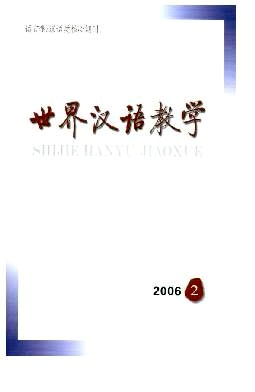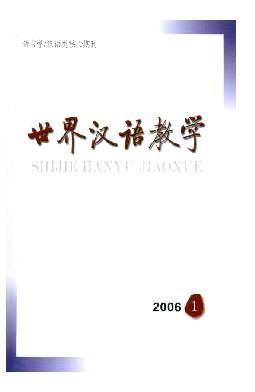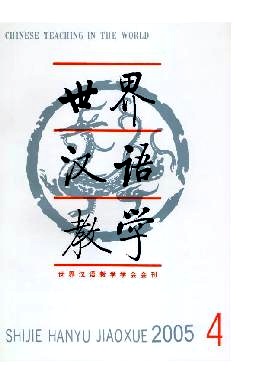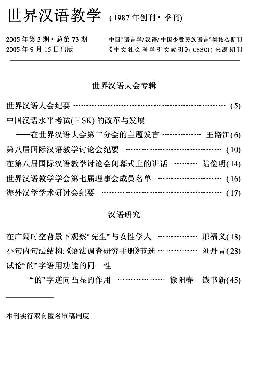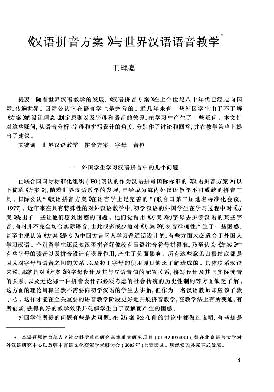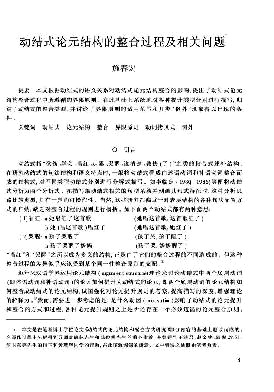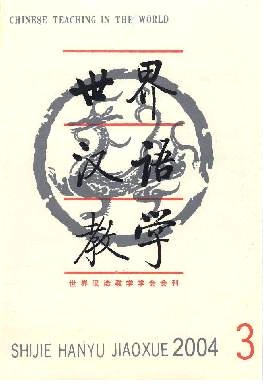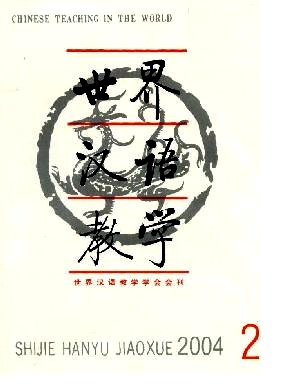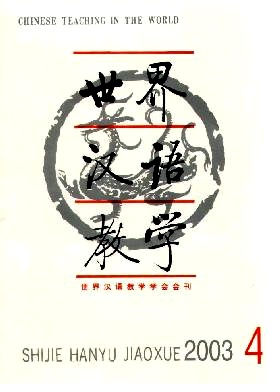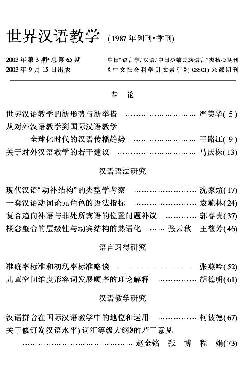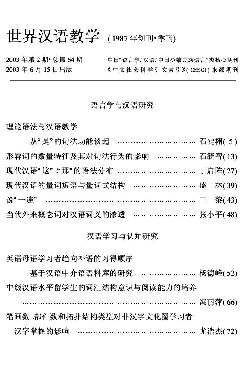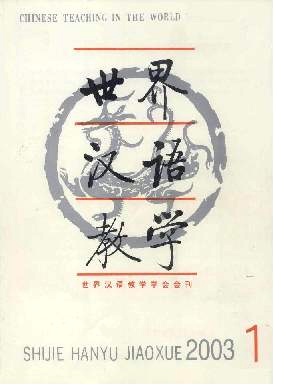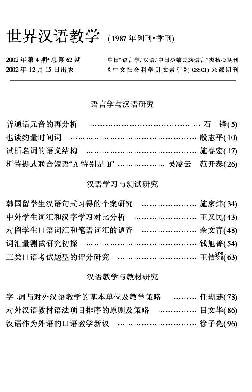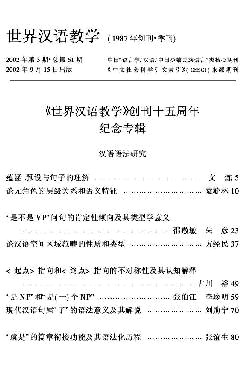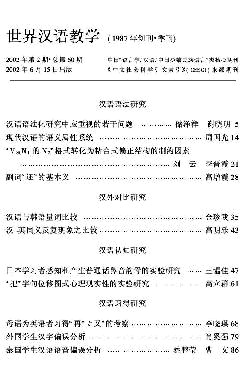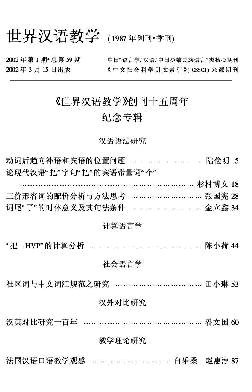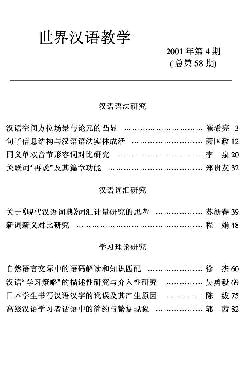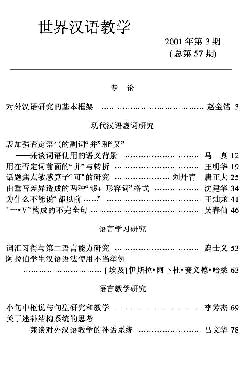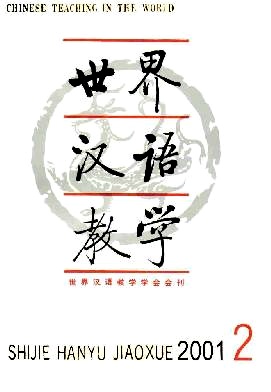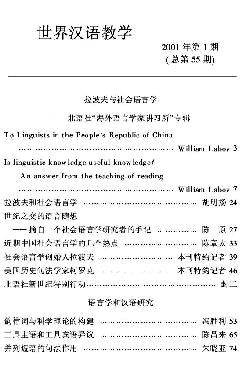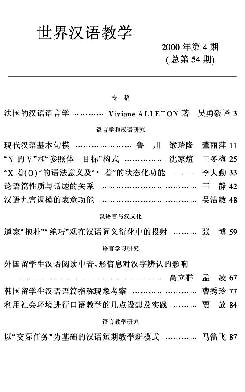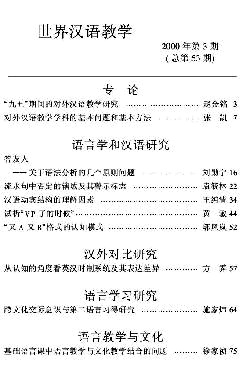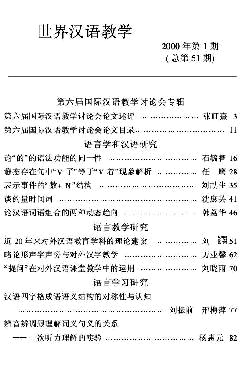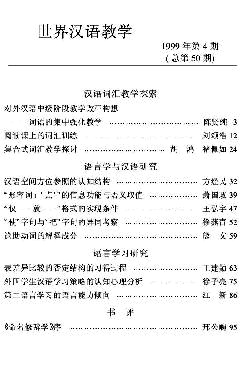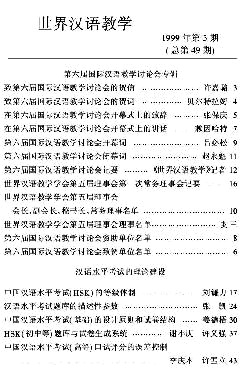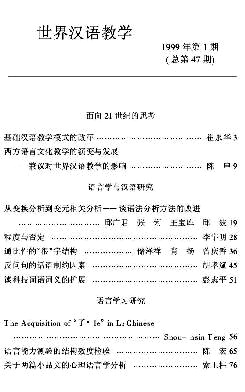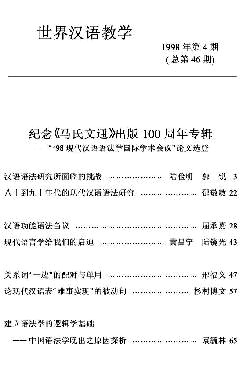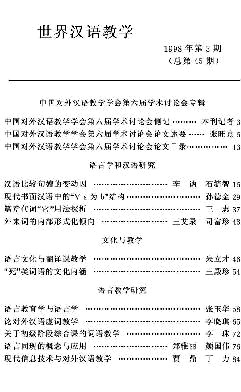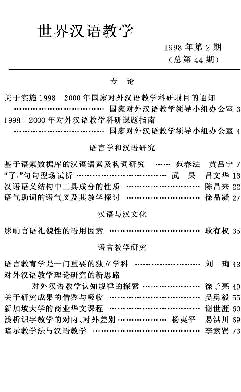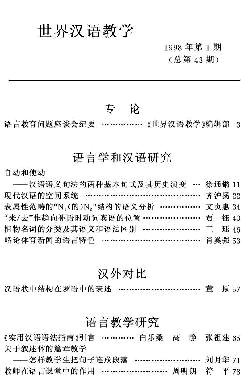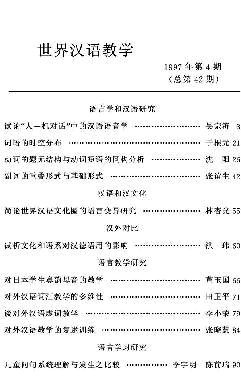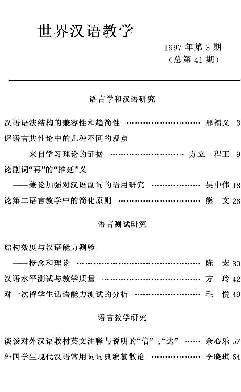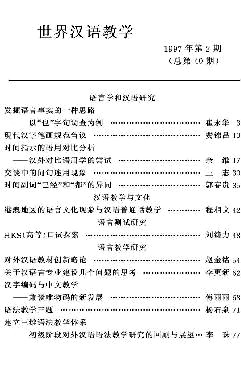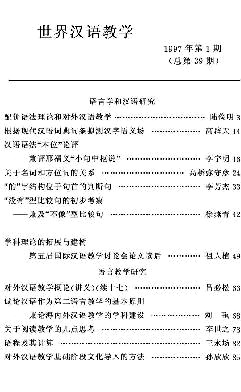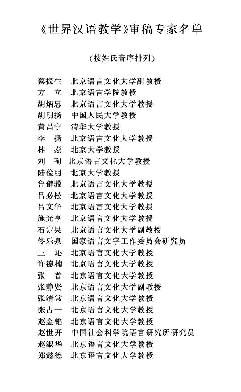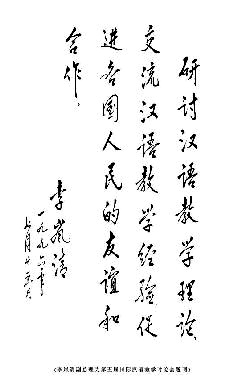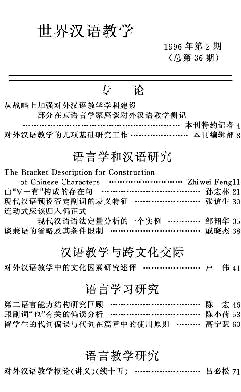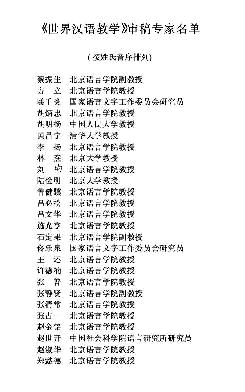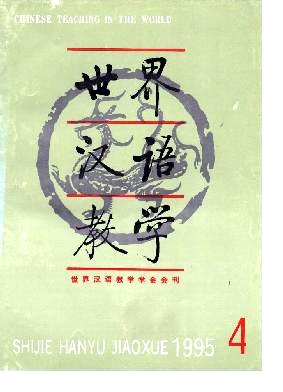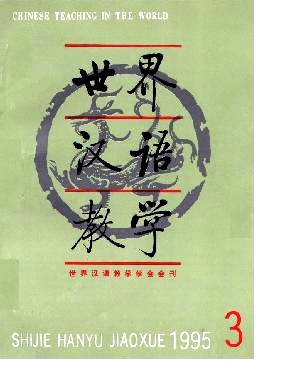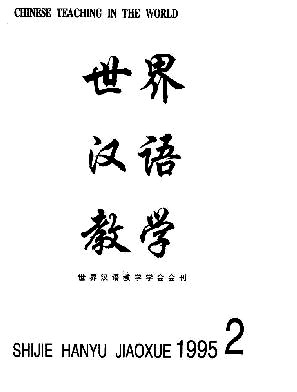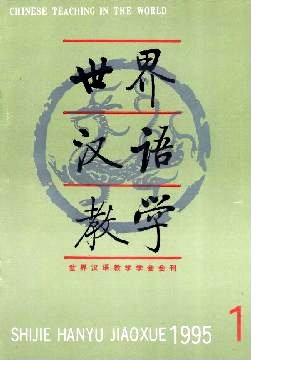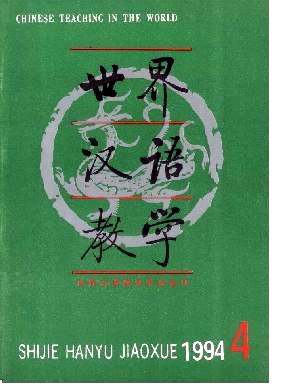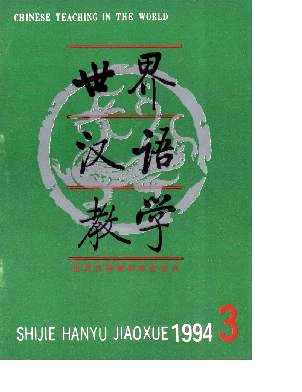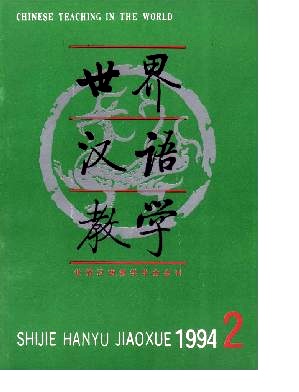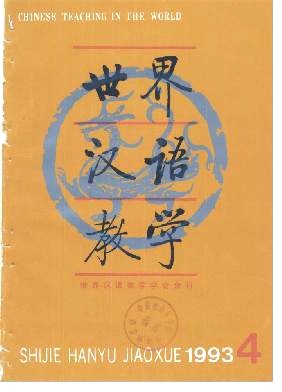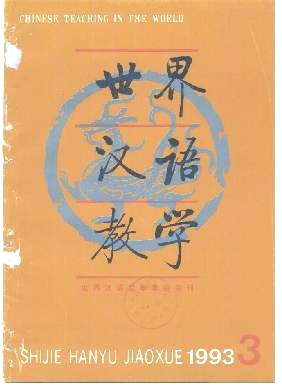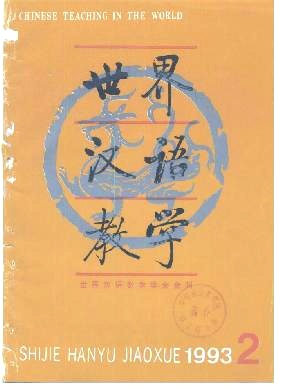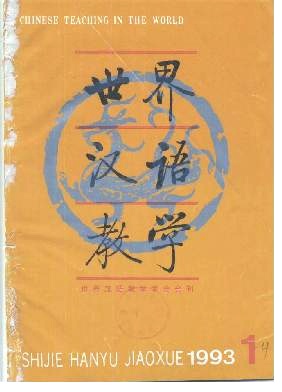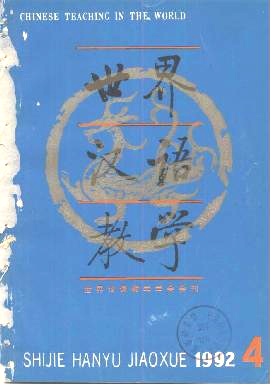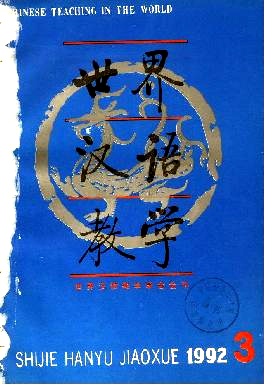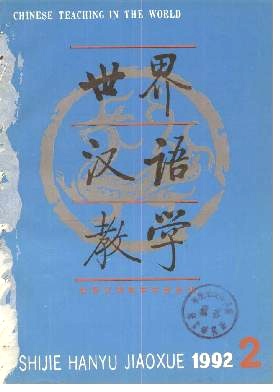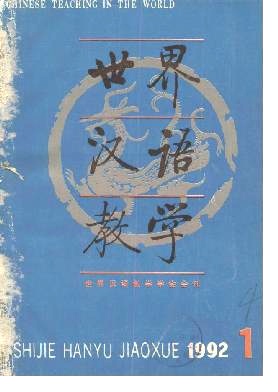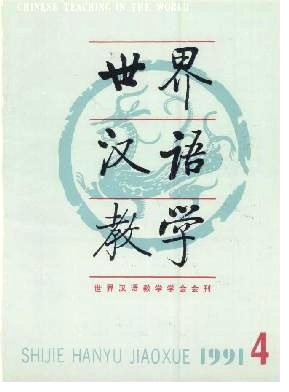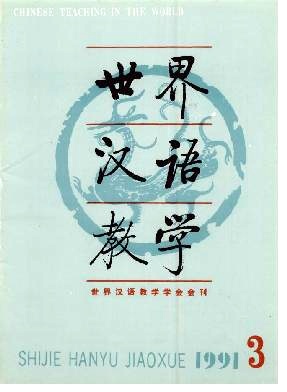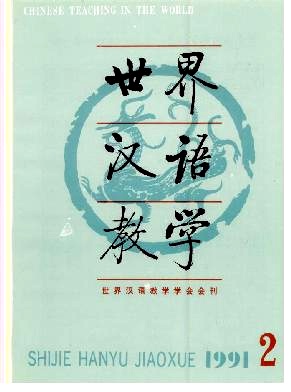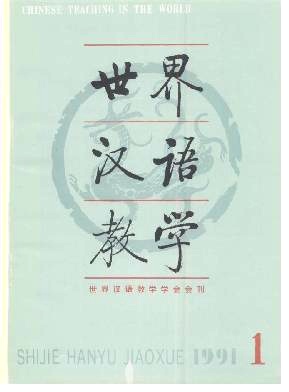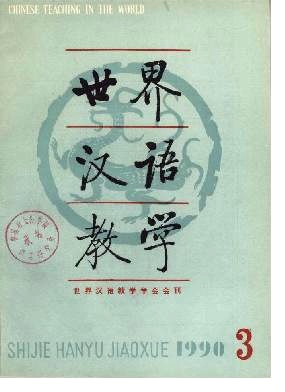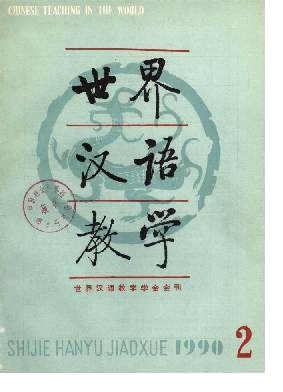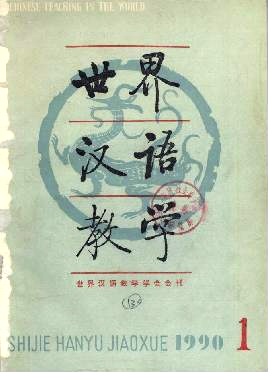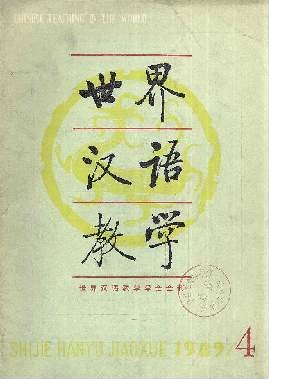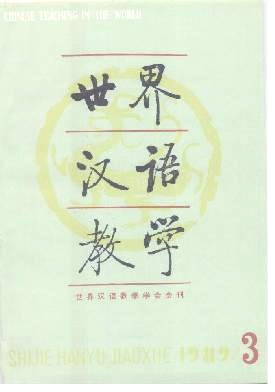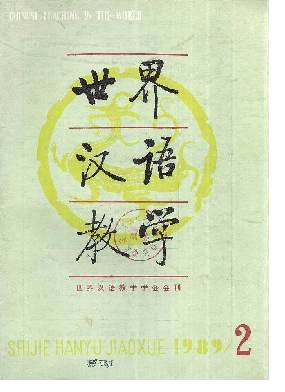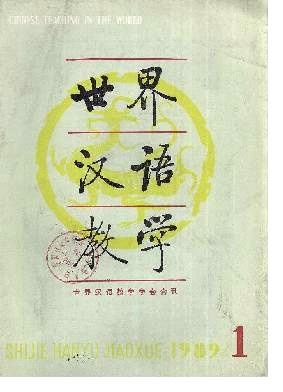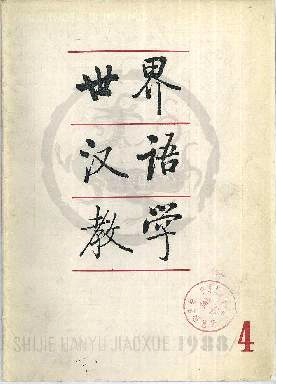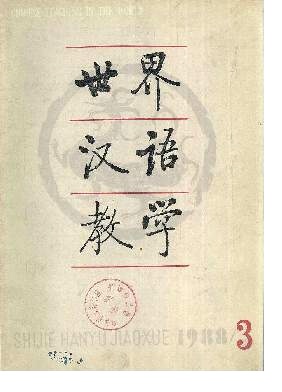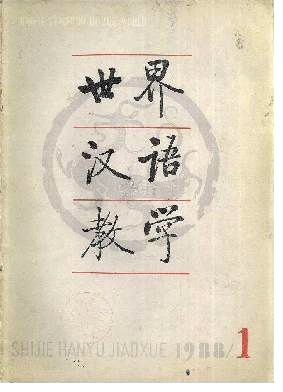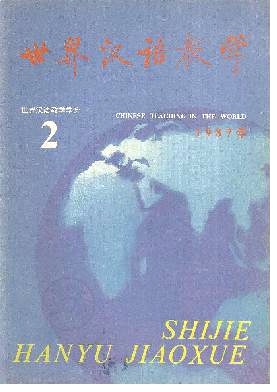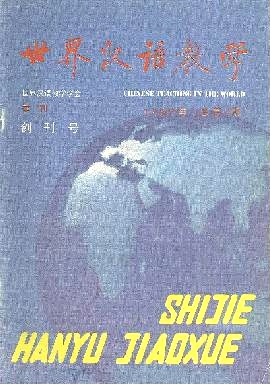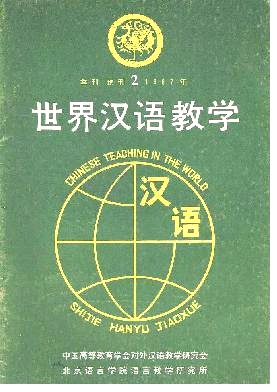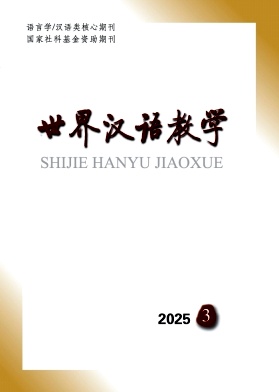
Tracking the information about your manuscript
Communicate with the editorial office
Query manuscript payment status Edit officeCollecting, editing, reviewing and other affairs offices
Managing manuscripts
Managing author information and external review Expert Information Expert officeOnline Review
Online Communication with the Editorial Department
Page Views
DeepSeek empowering innovation and development in international Chinese language education
CAI Wei ;CHU Chengzhi ;CUI Xiliang ;DING Anqi ;LIANG Xia ;LIU Lening ;SONG Jihua ;WEN Xiaohong ;WU Weiping ;XUN Endong ;YU Zhiqiang ;ZHAN Weidong ;ZHAO Yang;The polarity behaviors of model words in Modern Chinese and their functional motivations
SONG Wenhui;HU Xiaofan;ZHAO Tong;The semantic(logical) classification and pragmatic(intensity) classification of modal words should be distinguished, as different languages have different coding preferences. It is difficult to distinguish Chinese modal verbs and modal adverbs on the basis on formal standards, and such a distinction is not conducive to the systematic study of modality. This article combines them into a single group, modal words. In Chinese, modal words expressing strong volitional dynamic modality, strong moral necessity, and all those that express epistemic modalities cannot be negated by bu/mei(不/没); modal words expressing epistemic modalities cannot enter negative contexts such as polarity questions and the antecedents of conditional sentences while others are not subject to this constraint. Any single factor, modal intensity included, cannot explain the cause of the positive polarity items(PPIs), because the use of modal words is affected by multiple factors such as modal intensity, the speaker's perspective, and language encoding preferences.
The selection restrictions and motivations for the embedding of unconditional concessive sentences in interrogative clauses in Chinese
PENG Jiafa;XI Junnan;The interrogative sentence in Chinese has the dual function of asking questions and providing alternative options, and its specific function is determined by the syntax, semantics and pragmatics of the overall structure. Unconditional concessive sentences in Chinese can be embedded in positive-negative questions, alternative questions and wh-questions, but not in polar questions, because their embedding requires a set of alternative options. Positive-negative questions, alternative questions and wh-questions all conform to this feature. Specifically, positive-negative questions and alternative questions show the feature of free choice when embedded by unconditional concessive sentences, and wh-questions show the feature of free reference. The options of unconditional sentences can also be encoded in other forms, such as yeba…yeba…(‘whether…or…'), conjunctive connectives he(‘and') and yu(‘and'), disjunctive connectives huo(zhe)(‘or') and degree-indicating duomo(‘how'). Polar questions need to be separate sentences to achieve the interrogating function and provide alternative options, and thus cannot be embedded by unconditional concessive sentences. The interrogating function of polar questions requires the addressee to respond. Rhetorical questions composed of polar questions, however, do not have this requirement, but they cannot provide multiple options. Thus, rhetorical questions cannot be embedded by unconditional concessive sentences. Polar questions are biased in the options they provide, unable to provide equal choices for conditional clauses. Rhetorical questions represent an extreme case of option bias, in that the option is completely biased towards the negative form of the proposition, which, therefore, does not meet the requirements of unconditional concessive sentences.
On the form-function correspondence between gege and yige(yi)ge
WANG Jingzhi;LU Bingfu;Beijing Language and Culture University;The underlying logical semantics of the periphrastic constituent gege(个个) includes three aspects: [denotation], [scope], and [continuity], which makes it realized as a syntactic-semantic-functional hybrid: syntactically, it is both topical and pronominal, and semantically, it is both denotative and descriptive. Based on the multiple functions inherent in gege and the need for linguistic refinement, yige(yi)ge(一个(一)个) divides the functions of gege: yige(yi)ge1 which occurs before gege, shares the denotative function of gege; yige(yi)ge2 which follows gege, shares its descriptive function. This hypothesis can be confirmed by both synchronic evidence and diachronic evolution. The functional and syntactic distribution of gege, yige(yi)ge1 and yige(yi)ge2is actually a manifestation of form-function correspondence. The hypothesis proposed in this paper can explain the syntactic-semantic difference and connection between gege and yige(yi)ge in a relatively clear and systematic way.
Distinguishing running utterances from complex sentences: An empirical study based on semantic relations between clauses
QIN Peng;Whether running utterances in Chinese constitute a type of complex sentence remains a subject of debate. Although the majority of existing studies endorse the “complex sentence hypothesis, ” the supporting arguments often contain inconsistencies and ambiguities. This study revisits these arguments from the perspective of semantic relations between clauses, using behavioral experiments as its methodological approach. The results indicate that running utterances and complex sentences are better treated as distinct categories rather than a unified whole—at least in terms of semantic connectivity. Participants exhibited significantly lower inter-rater consistency, lower accuracy, and longer reaction times when judging semantic relations in running utterances, in comparison with their performance on complex sentences. These findings lend support to the distinction between non-regulated semantic relations(in running utterances) and regulated ones(in complex sentences), thereby casting doubt on the robustness of the “complex sentence hypothesis.” Furthermore, the presence or absence of connectives did not significantly affect participants' judgments of semantic relations, which suggests that prior studies may have overestimated the role of connectives in the interpretation of running utterances.
[Downloads: 11,837 ] [Citations: 1,362 ] [Reads: 7 ] HTML PDF Cite this article
Production-oriented Approach in Teaching Chinese as a Second Language
Wen Qiufang;This paper first briefly introduces the background against which the production-oriented approach(POA)has been developed.Secondly,it describes five developmental stages of the POA with a detailed explanation of the newly-revised POA system at the fifth stage,and finally discusses the main problems in applying the POA in teaching Chinese as a second language.
[Downloads: 20,275 ] [Citations: 1,255 ] [Reads: 8 ] HTML PDF Cite this article
Lexicalization and the origin of discourse markers
DONG XiufangThis paper analyzes two discourse markers in Chinese: Shuí zhīdào(谁知道) and Bié shuō(别说). These two discourse markers are the result of lexicalization. During the process of acquiring the function of discourse marker, Shuí zhīdào and Bié shuō experienced similar syntactic and semantic changes. Syntactically, they all started as free phrase and became single word-like unit. Semantically, they all underwent conventionalization and semanticization of utterance meaning. Many Chinese discourse markers originated from verbal constructions, appearing either in the front position or in the final position of a clause. They do not tend to be cliticized as some other functional categories, and they can have variants in form. The analysis of discourse markers can throw some light on the relationship between lexicalization and grammaticalization: The two processes can lead to the same kind of result, i.e. both of them can give birth to functional categories, and the two processes can apply to the same form successively.
[Downloads: 21,969 ] [Citations: 1,254 ] [Reads: 7 ] HTML PDF Cite this article
On the objectiveness of Chinese textbooks
LI QuanFollowing a review of the current studies on the objectiveness of Chinese textbooks for for- eign learners, we discussed in this paper three relevant questions: 1) Reasons and rationale; 2) Connotation and nature; and 3) Approaches to embody and realize the conception of objec- tiveness. At the end the relations between objectiveness and other principles in textbook writing are discussed.
[Downloads: 12,661 ] [Citations: 1,122 ] [Reads: 5 ] HTML PDF Cite this article
Lexicalization and the origin of discourse markers
DONG XiufangThis paper analyzes two discourse markers in Chinese: Shuí zhīdào(谁知道) and Bié shuō(别说). These two discourse markers are the result of lexicalization. During the process of acquiring the function of discourse marker, Shuí zhīdào and Bié shuō experienced similar syntactic and semantic changes. Syntactically, they all started as free phrase and became single word-like unit. Semantically, they all underwent conventionalization and semanticization of utterance meaning. Many Chinese discourse markers originated from verbal constructions, appearing either in the front position or in the final position of a clause. They do not tend to be cliticized as some other functional categories, and they can have variants in form. The analysis of discourse markers can throw some light on the relationship between lexicalization and grammaticalization: The two processes can lead to the same kind of result, i.e. both of them can give birth to functional categories, and the two processes can apply to the same form successively.
[Downloads: 21,969 ] [Citations: 1,254 ] [Reads: 7 ] HTML PDF Cite this article
Production-oriented Approach in Teaching Chinese as a Second Language
Wen Qiufang;This paper first briefly introduces the background against which the production-oriented approach(POA)has been developed.Secondly,it describes five developmental stages of the POA with a detailed explanation of the newly-revised POA system at the fifth stage,and finally discusses the main problems in applying the POA in teaching Chinese as a second language.
[Downloads: 20,275 ] [Citations: 1,255 ] [Reads: 8 ] HTML PDF Cite this article
On the "Three Concerns" of Teaching Chinese as a Second Language
CUI XiliangThis paper discusses the "Three Concerns"(teacher education,textbook development and pedagogical research) about teaching Chinese as a second language. After an analysis of the background and status quo of these three concerns and an investigation of various aspects of TCSL in multi-cultural circumstances,it makes some suggestions to resolve the existing problems. It argues that teacher education is the primary one among the "Three Concerns",therefore more emphasis should be made on the professional training of teachers by both policy makers and the teachers themselves as well as on the fundamental and practical research that should be carried out in various aspects and at different levels.
Review and Re-evaluation of the Methodology in Teaching Chinese as a Foreign Language
ZHAO JinmingThis article discusses the historical origins of methodology involved in teaching Chinese as a second or foreign language,which started 90 years ago and have been developing and improving ever since. The author offers his recent understanding of the integrative method for teaching Chinese as a second or foreign language. The author points out that this particular method,which originated from its roots in Chinese teaching itself and took its shape in teaching practice,has been perfecting. It has the characteristics of Chinese language teaching and also befitting the trend of the development in worldwide second languages teaching. But,the author cautions against blindness while remaining mindful of the recent development of second languages methodology of other countries. At the present,the pressing matter is to substantiate and perfect the integrative teaching method in order to secure its independent and unique status amongst the second language teaching approaches in the world.
Concept and mode of teaching Chinese as a second language
Zhao JinmingThis paper focuses on the new concept of second language teaching worldwide, putting forward the opinion that the relation of Chinese language teaching and Chinese character teaching is the key when exploring the mode of teaching Chinese as a second language. In order to improve Chinese learners’ comprehensive Chinese proficiency, more importance should be attached to the balance of language skills in teaching design and written language teaching should be strengthened.

